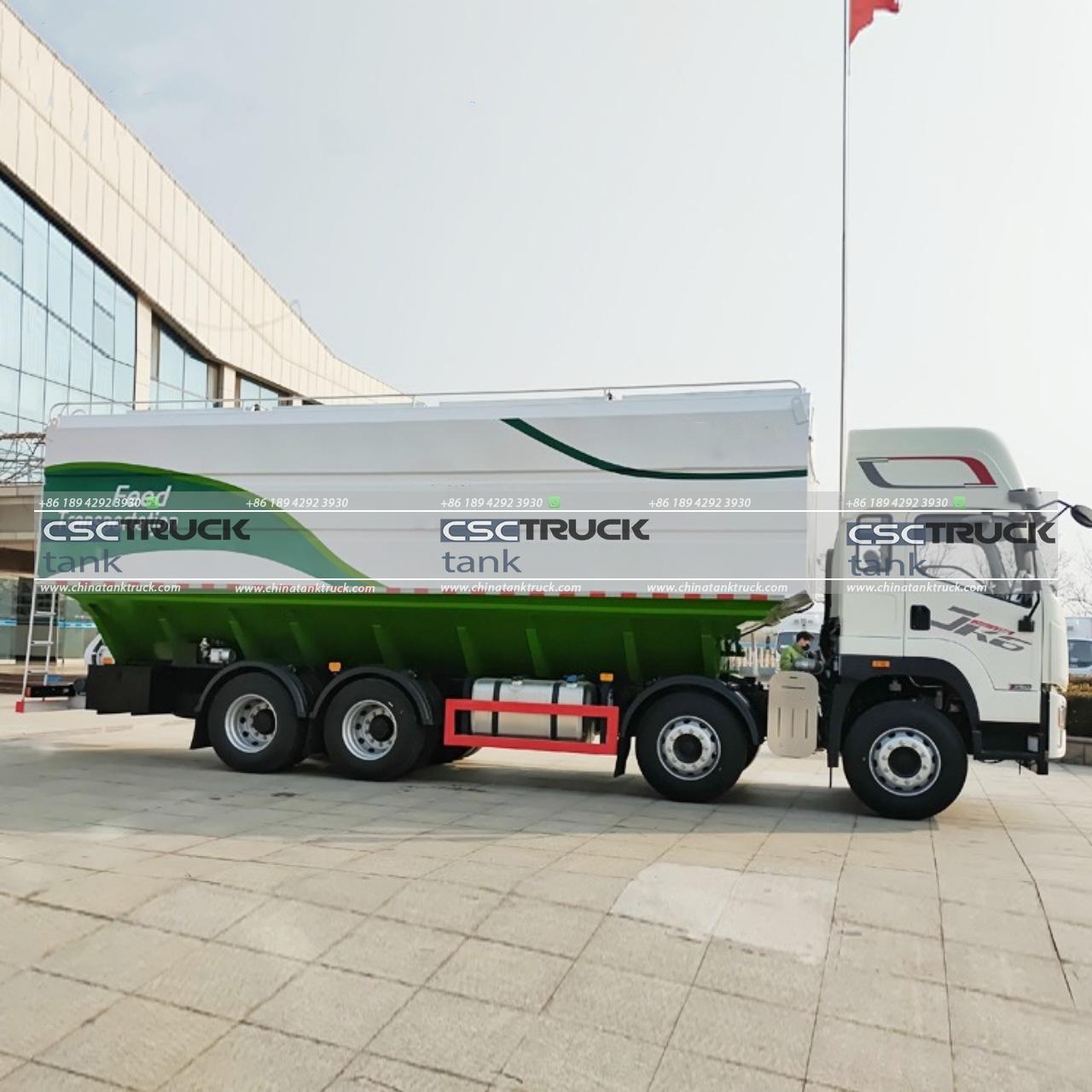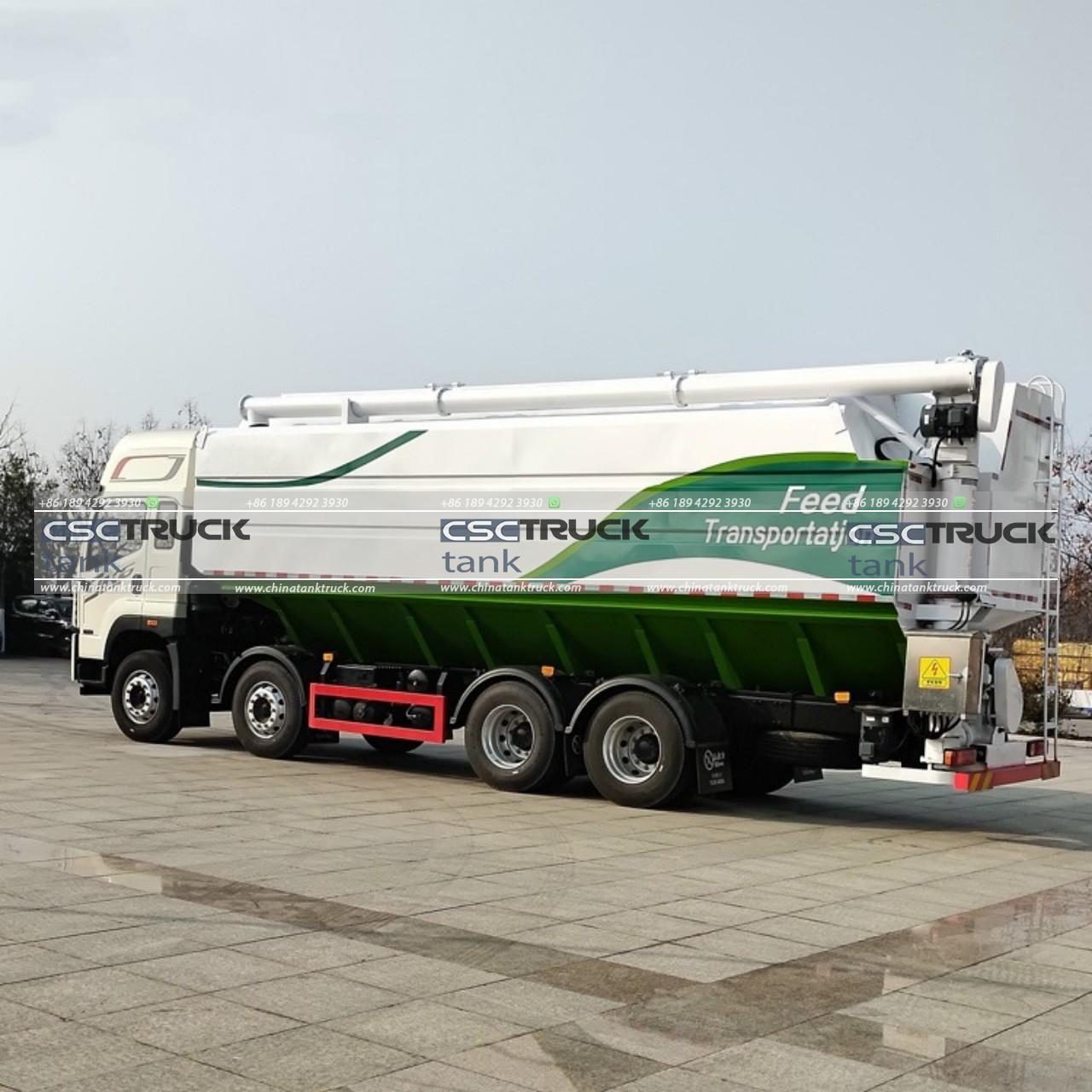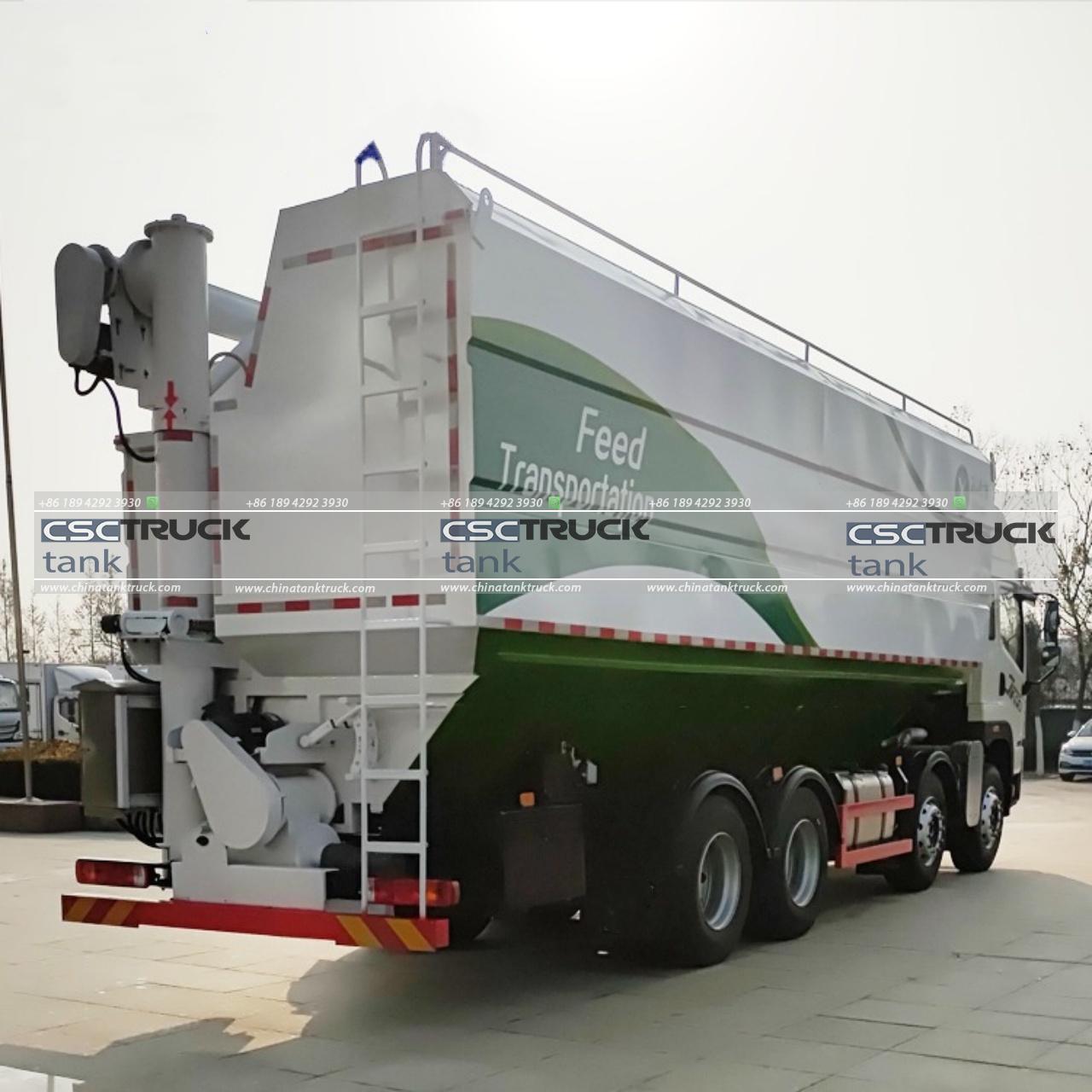What is a Pneumatic Tanker?
A pneumatic tanker, often referred to as a pneumatic bulk trailer or dry bulk tanker, is a specialized type of tanker used for transporting powdered or granular dry bulk commodities. Unlike liquid tankers that carry fluids, pneumatic tankers are designed to transport dry materials such as cement, flour, sand, plastic pellets, and other similar goods. These materials are typically loaded and unloaded using compressed air, making the process efficient and minimizing the risk of contamination or spillage.
Design and Structure of Pneumatic Tankers
Pneumatic tankers are built with a cylindrical shape, which is ideal for transporting dry bulk materials. The cylindrical design ensures even distribution of the load, reducing the risk of tipping during transport. These tankers are typically made from materials such as aluminum or steel, chosen for their durability and resistance to corrosion. The interior of the tanker is divided into multiple compartments, each designed to hold specific quantities of the material being transported.
The key feature of a pneumatic tanker is its ability to unload its contents using compressed air. The tanker is equipped with a series of hoses, valves, and air compressors that facilitate this process. When the tanker reaches its destination, the air compressor is activated, forcing air into the tanker. The pressurized air pushes the dry bulk material out of the tanker through the discharge hose and into a storage silo or other designated container.

Types of Pneumatic Tankers
Pneumatic tankers come in various sizes and configurations, each designed to meet specific transportation needs. The most common types include:
1. Single-Compartment Pneumatic Tankers: These tankers have a single compartment and are typically used for transporting large quantities of a single type of material. They are ideal for industries that require the transport of bulk materials like cement or fly ash.
2. Multi-Compartment Pneumatic Tankers: These tankers are divided into multiple compartments, allowing them to carry different types of materials in a single trip. This is particularly useful for companies that need to transport various materials to the same location, reducing the need for multiple trips.
3. High-Pressure Pneumatic Tankers: These tankers are designed to handle materials that require higher levels of air pressure for unloading. They are often used in industries where the material being transported has a higher density or requires precise handling during the unloading process.
4. Low-Pressure Pneumatic Tankers: These are used for materials that do not require as much air pressure for unloading. They are generally more economical and are used for transporting lighter or less dense materials.
Applications of Pneumatic Tankers
Pneumatic tankers are widely used across various industries due to their versatility and efficiency. Some of the common applications include:
1. Construction Industry: In the construction industry, pneumatic tankers are primarily used for transporting materials like cement, sand, and fly ash. These materials are essential for construction projects, and pneumatic tankers ensure they are delivered to the site efficiently and without contamination.
2. Food and Beverage Industry: Pneumatic tankers are also used in the food and beverage industry for transporting dry bulk food ingredients such as flour, sugar, and grain. The sealed design of the tanker ensures that the materials are protected from external contaminants, maintaining the quality and safety of the food products.
3. Plastics Industry: In the plastics industry, pneumatic tankers are used to transport plastic pellets, which are the raw materials for producing various plastic products. The pneumatic unloading process is ideal for handling these delicate materials, ensuring they are delivered without damage.
4. Chemical Industry: The chemical industry uses pneumatic tankers to transport powdered chemicals. These tankers are designed to prevent contamination and ensure the safe transport of potentially hazardous materials.
5. Agricultural Industry: Pneumatic tankers are also employed in the agricultural sector to transport feed, grain, and other dry bulk agricultural products. The efficient unloading system of these tankers is particularly beneficial in rural areas where infrastructure might not support more traditional unloading methods.

Advantages of Using Pneumatic Tankers
The use of pneumatic tankers offers several advantages, making them a preferred choice for transporting dry bulk materials. Some of these advantages include:
1. Efficient Unloading: The primary advantage of pneumatic tankers is their ability to unload materials quickly and efficiently. The use of compressed air eliminates the need for manual labor, reducing unloading times and minimizing the risk of injury.
2. Protection of Materials: Pneumatic tankers are designed to protect the materials being transported from contamination. The sealed design ensures that the materials are not exposed to external elements, maintaining their quality and safety.
3. Versatility: Pneumatic tankers are versatile and can be used to transport a wide range of dry bulk materials. Whether it’s construction materials, food products, or chemicals, these tankers can handle various types of cargo with ease.
4. Reduced Transportation Costs: By using multi-compartment tankers, companies can transport different materials in a single trip, reducing the need for multiple trips and lowering transportation costs. This is particularly beneficial for industries that require the transport of various materials to the same location.
5. Safety: The use of pneumatic tankers enhances safety during the transportation and unloading process. The enclosed system minimizes the risk of spillage, and the use of compressed air reduces the need for manual handling of materials.
6. Environmental Benefits: Pneumatic tankers also offer environmental benefits. The sealed system reduces the risk of spills, which can lead to environmental contamination. Additionally, the efficient unloading process reduces the time the vehicle spends idling, lowering fuel consumption and emissions.
Challenges Associated with Pneumatic Tankers
While pneumatic tankers offer numerous advantages, they also come with certain challenges. These include:
1. Maintenance Requirements: The complex system of hoses, valves, and compressors in pneumatic tankers requires regular maintenance to ensure efficient operation. Failure to maintain these components can lead to equipment failure and costly repairs.
2. Initial Cost: Pneumatic tankers are typically more expensive to purchase than other types of tankers due to their specialized design and equipment. However, the efficiency and versatility of these tankers can offset the initial cost over time.
3. Training Requirements: Operating a pneumatic tanker requires specialized training, particularly in the use of the compressed air system. Companies must invest in training programs to ensure that their drivers and operators are skilled in handling these vehicles.
4. Limitations in Material Types: While pneumatic tankers are versatile, they are not suitable for transporting all types of materials. For example, materials that are too large or heavy may not be effectively transported using a pneumatic tanker.

Conclusion
Pneumatic tankers play a crucial role in the transportation of dry bulk materials across various industries. Their efficient unloading system, protection of materials, and versatility make them a valuable asset in sectors ranging from construction to agriculture. Despite the challenges associated with their operation and maintenance, the benefits of using pneumatic tankers often outweigh the drawbacks, making them a preferred choice for many companies. As industries continue to demand efficient and safe transportation solutions, pneumatic tankers are likely to remain an essential component of the supply chain.

